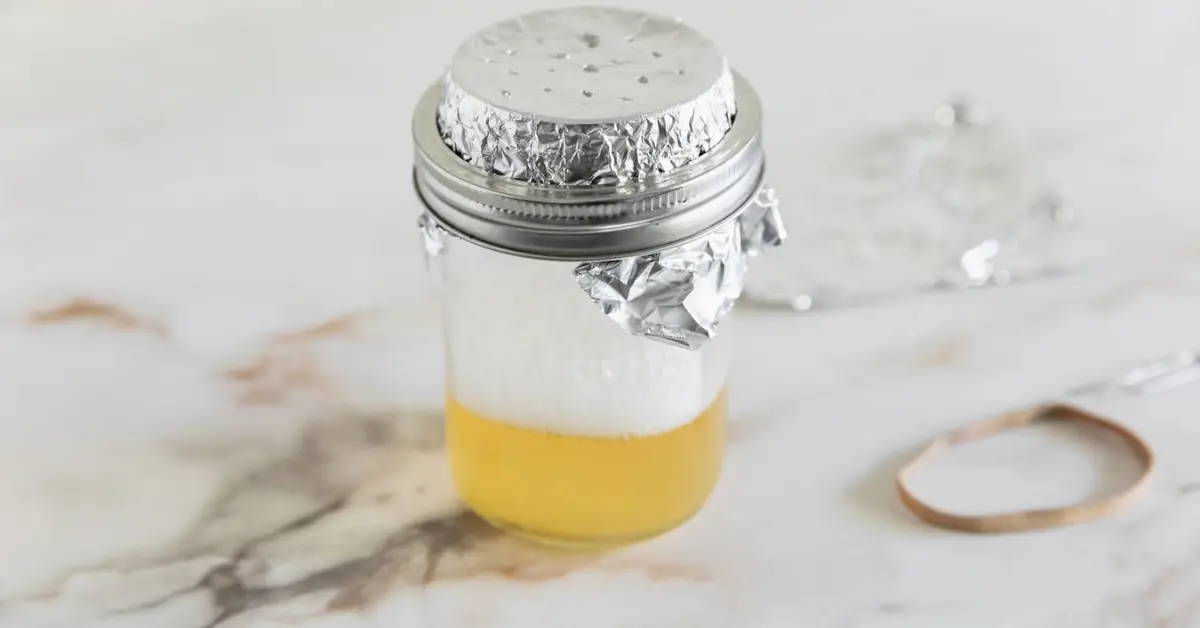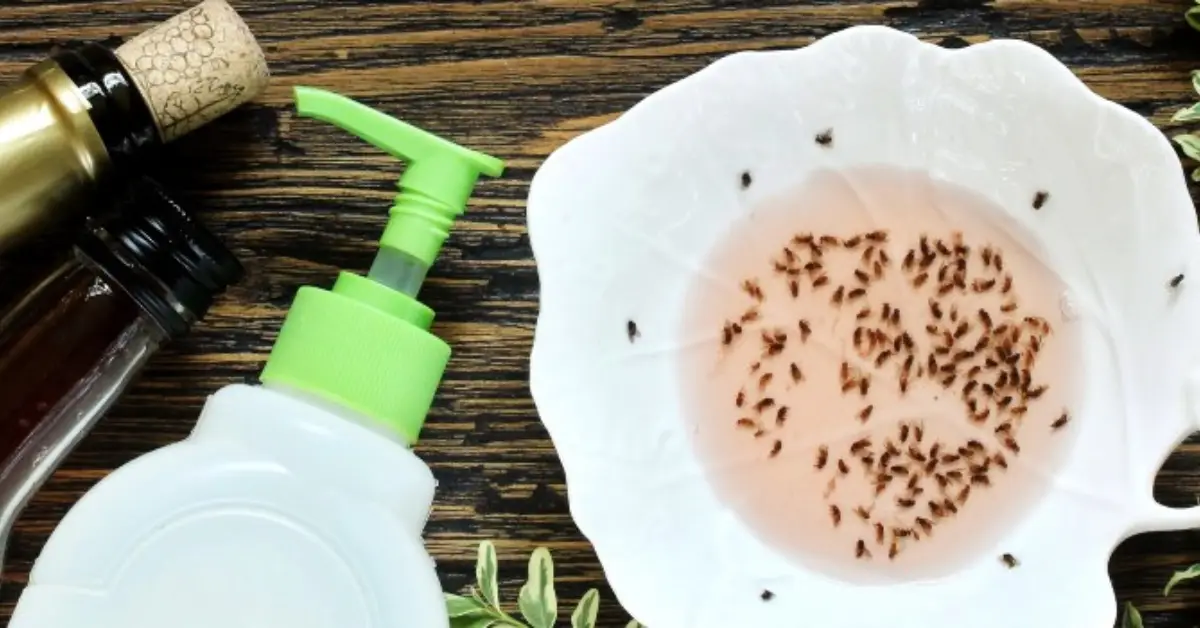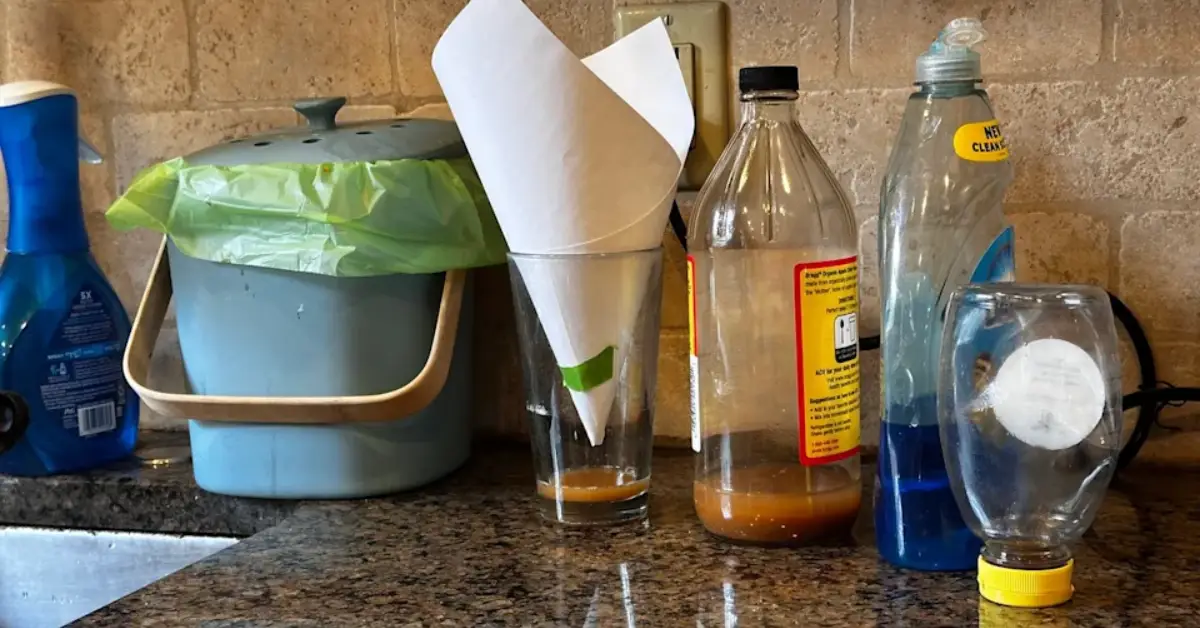7 Proven Vinegar Remedies That Actually Work Against Flies
I’ve been there—the first warm evening, you crack a window, and by dinner a few bold house flies are already circling the sink like they pay rent. You swat, they vanish; you sit, they’re back. It’s annoying, unsanitary, and somehow worse when guests notice before you do.
Here’s the good news: you don’t need sprays or a full-on pest contract to win. Vinegar—especially apple cider vinegar—can do the heavy lifting if you set it up right. Most people try a random bowl and hope; that’s why it “doesn’t work.” The trick is using the right mix, placement, timing, and a couple of sneaky upgrades that pull flies in and keep them there.
In this guide, I’ll show you seven smarter vinegar setups I use at home: fast traps for the kitchen rush, quiet lures for overnight, and a drain routine that stops the source. No gimmicks—just simple steps that actually move the needle.
Before we dive in, tell me: where do flies show up first in your place—near the fruit bowl, the bin, or the drain?
Why Vinegar Works (Scientific & Behavioral Basis)
I used to think flies just showed up for anything sweet—but there’s real science behind why vinegar pulls them in so effectively. It’s not magic; it’s chemistry and behavior working together.
When vinegar starts to ferment, it releases acetic acid vapors—the same kind of scent that signals “ripe or decaying food” to a fly’s brain. That smell is like a dinner bell. To them, it means there’s sugar or yeast nearby, which usually means food and a good place to lay eggs.
But here’s where it gets interesting. Flies aren’t drawn to all vinegar in the same way. The concentration and mix matter more than most people realize.
- Too strong, and they back off. If you’ve ever poured pure white vinegar into a trap and wondered why nothing happened, that’s why. High acidity overwhelms their scent sensors.
- Add a little sugar, fruit, or alcohol, and suddenly you’ve created the perfect storm—they can’t resist it.
- Smell balance is key. A mild sour-sweet scent mimics the natural fermentation signals flies chase in the wild.
You and I can use this to our advantage. Instead of just pouring vinegar in a cup, tweak it:
- Use apple cider vinegar for a richer, fruity scent.
- Add a few drops of dish soap to trap them effectively.
- Keep the mix light, not overpowering—think “ripe fruit,” not “cleaning spray.”
Once you understand the behavior behind the buzz, every trap becomes smarter. It’s not about what you use—it’s how you use it. If you love natural cleaning shortcuts, you’ll also want to check out how vinegar and baking soda together can deep-clean kitchen surfaces without harsh chemicals — the same science that draws flies also breaks down grime and grease.
7 Genius Vinegar-Based Methods to Kill or Trap Flies

If you’ve tried vinegar traps before and they didn’t seem to work, chances are it wasn’t the vinegar—it was the setup. The real difference between a weak trap and one that clears your kitchen overnight often comes down to small things like ratio, placement, and timing. Here’s how to get it right.
1. Classic Apple Cider Vinegar + Dish Soap Trap
This is the go-to method, but it only works when mixed properly.
Steps:
- Pour about ½ cup of apple cider vinegar into a small bowl.
- Add 2–3 drops of dish soap (any kind works).
- Cover it loosely with plastic wrap and poke a few small holes on top.
- Place it where flies hover most—near fruit bowls, trash bins, or the sink.
If you’ve ever wondered why this combination works so well, it’s because the dish soap breaks the surface tension of the vinegar, making flies sink the moment they touch it, according to Healthline’s breakdown on natural fly traps.
Pro Tip: Warm the vinegar slightly before setting it out—the aroma spreads faster and draws flies in within minutes. For even more creative ways to use apple cider vinegar around the house, try these 8 simple vinegar tricks that replace expensive cleaners — they’ll keep your kitchen fresh while doubling as pest deterrents.
2. Funnel or Cone Trap with Vinegar + Fruit Bait Combo
When the infestation’s heavy, a touch of sweetness makes all the difference.
How to do it:
- Drop a piece of overripe fruit (like banana or apple) in a jar.
- Add 2 tablespoons of vinegar and a splash of water.
- Make a paper funnel and place it cone-side down over the jar opening.
Flies follow the scent inside but can’t find their way back out. It’s a simple trick for corners or near compost bins.
Ideal scenario: Works best for kitchens with ripe produce or indoor compost setups.
3. Vinegar & Ethanol / Alcohol Blend Trap
If your regular trap isn’t cutting it, this version is stronger. Combining vinegar and alcohol doubles the attraction power.
Recipe:
- Mix 2 parts apple cider vinegar + 1 part beer, wine, or rubbing alcohol.
- Pour into a shallow dish and leave uncovered.
The ethanol vapor amplifies the smell, making it irresistible to house flies that usually ignore mild traps.
Best use: Great for larger infestations or places where flies keep coming back.
Caution: Avoid placing near open flames—alcohol is flammable.
4. Vinegar Spray with Essential Oils
Sometimes, it’s not about trapping but deterring.
Mix:
- Combine 1 part vinegar + 1 part water in a spray bottle.
- Add 5–6 drops of peppermint, basil, or lemongrass oil.
- Shake and spray on windowsills, counters, and entry points.
It keeps flies from landing where you don’t want them—without that harsh chemical smell.
Pro Tip: Reapply every couple of days; natural oils fade faster than synthetic sprays.
5. Vinegar-Soaked Fabric / Pads
If you don’t like open bowls sitting around, this one’s discreet and effective.
How to do it:
- Soak cotton pads or paper towels in vinegar.
- Place them in small containers near garbage cans or under sinks.
- Replace every 2–3 days.
It acts as a low-maintenance fly magnet, pulling them away from main areas without being visible.
6. In-Drain / Sink Trap
Flies often come from places you can’t see—like inside your drains.
Steps:
- Pour ½ cup vinegar, boiling water, and a few drops of dish soap into the drain.
- You can also set a small vinegar trap right above the drain overnight.
This method targets the breeding ground, not just the visible problem. Keeping drains clean means cutting off their source entirely.
7. Timed Vinegar Traps (Night / UV Combo)
Flies have routines—you can use that against them.
How to do it:
- Set your vinegar trap near a nightlight or UV lamp at dusk.
- Keep the area dark except for that small light source.
- Move traps every 24 hours for better coverage.
This trick works especially well for evening hotspots like patios, pet areas, or near the back door where flies sneak in.
Once you start experimenting, you’ll quickly see which method works best for your space. I rotate between two traps—one near the sink, another by the trash—and it’s made my kitchen a fly-free zone. What about you? Which of these are you going to try first?
Compare: Vinegar vs Other Methods

When it comes to getting rid of house flies, vinegar isn’t your only option—but it’s often the most balanced one. Here’s how it stacks up against other common methods, and when it makes sense to mix and match.
Vinegar Traps vs. Chemical Insecticides
I’ve tried both, and honestly, they serve very different purposes.
Vinegar traps:
- Safe for kids, pets, and food areas.
- Cheap and easy to set up anytime.
- Don’t cause resistance—flies can’t “adapt” to vinegar the way they do with sprays.
Chemical insecticides:
- Kill fast, but they’re toxic and can leave residues.
- Require caution indoors and can irritate your lungs or skin.
- Over time, repeated use makes flies harder to kill.
If you’re looking for something you can use daily without worrying about side effects, vinegar wins hands down. It’s not instant, but it’s sustainable.
Vinegar vs. Sticky Traps vs. Electric Zappers
Sticky traps are low-effort but messy. They catch flies—but also dust, hair, and sometimes anything else floating by. Electric zappers feel high-tech but don’t always attract house flies, since those respond more to scent than light.
Why vinegar stands out: It works by smell, not light, so you’re targeting the actual behavior of the fly rather than hoping it bumps into a zapper. And unlike sticky traps, it’s cleaner—you can reset a vinegar trap in minutes.
When to Combine Vinegar with Other Methods
For stubborn infestations, don’t think “either-or.” Use vinegar traps as your base, then add support methods strategically:
- Combine vinegar traps with essential oil sprays around entry points.
- Use sticky traps near windows and vinegar near trash bins—two attract zones, one problem solved.
- Finish by cleaning drains with hot water and vinegar weekly to stop breeding.
Integrated pest control isn’t complicated—it’s just about knowing what each method does best and letting them work together. And if you’re serious about keeping your home spotless the natural way, explore these vinegar and baking soda hacks that make cleaning faster and easier — perfect to pair with your fly-control routine.
Myths, Mistakes & What Doesn’t Work (Even If You Try Vinegar)
Every time someone says, “I tried vinegar and it didn’t work,” it’s usually because of one of these four mistakes.
Myth: Vinegar Repels Flies (It Actually Attracts Them)
This is a common misunderstanding. According to Clegg’s Pest Control, vinegar doesn’t scare flies away—it lures them in because it mimics the scent of fermentation. That’s why it’s used in traps, not as a repellent.
Mistake: Using Too Strong Vinegar
If you pour pure white vinegar into a bowl, most flies will ignore it. High acidity overwhelms their senses. A diluted mix with a bit of sweetness (like apple cider vinegar or a sugar blend) works much better.
Mistake: Leaving Traps Where They Invite Flies Inside
Don’t put traps near open doors or windows—you’ll actually attract more flies into the house. Keep them near problem zones like sinks, trash cans, or drains where flies are already active.
Mistake: Forgetting to Remove Alternate Attractants
A vinegar trap won’t do much if you still have ripe fruit, dirty dishes, or overflowing bins around. Flies will always pick the stronger scent first. Cleaning and removing food waste is half the solution.
Once you know these myths and small details, every trap works better. Vinegar isn’t a miracle on its own—but used smartly, it’s one of the few pest tricks that’s safe, repeatable, and genuinely effective.
Step-by-Step Implementation Checklist

If you’re ready to finally take back your kitchen (and your peace of mind), here’s a simple checklist you can follow. You don’t need anything fancy—just consistency.
1. Choose your trap method(s)
Pick one or two from the list—start with the vinegar + dish soap trap and the in-drain mix for best coverage.
2. Identify hotspots in your home
Watch where flies hang out most: the sink, fruit bowl, trash area, or near windows. That’s where your traps belong.
3. Prepare mixtures and traps
Follow the right ratios and use apple cider vinegar for stronger scent appeal. Keep a few jars ready so you can rotate them easily.
4. Set traps and monitor
Place them in the problem zones and check after a few hours. You’ll often see the first few trapped by the end of the day.
5. Replace or clean regularly
Every 2–3 days, rinse the containers, refresh the vinegar mix, and wipe nearby surfaces to prevent buildup.
6. Remove alternate attractants
Empty trash, refrigerate fruit, and clean drains weekly—traps alone won’t work if other scents are stronger.
7. Evaluate weekly and reposition
If one spot isn’t catching much, move it. Flies shift patterns depending on weather and light—adjust as needed.
Tip: Keep this checklist printed or saved on your fridge—it makes monitoring effortless and keeps your home consistently fly-free.
What Results to Expect & Tracking Success
Don’t expect overnight magic—but do expect steady wins if you stay consistent.
- First 24 hours: You’ll likely notice a handful of flies trapped—especially near the kitchen sink.
- After 3 days: The number of visible flies should drop noticeably.
- After 1 week: You should see a clear difference in overall activity—few to none lingering around food.
If you’ve followed everything and flies are still coming back after a week, it’s time to check for hidden breeding zones (like drains, garbage bins, or old mops). When those are cleaned and the problem persists, consider calling a licensed pest control service—sometimes infestations come from sources outside your home.
Which of these vinegar traps are you planning to try first? Share your setup or results in the comments below—I’d love to know what worked best for you.
For more smart, affordable home improvement guides like this one, visit Build Like New and explore easy ways to make your home cleaner, safer, and more comfortable every day.
Disclaimer: This article is for informational purposes only and is based on general home maintenance practices. Always handle vinegar and other ingredients safely, and test any mixture in small areas first. If fly infestations persist or worsen, seek help from a licensed pest control professional.


